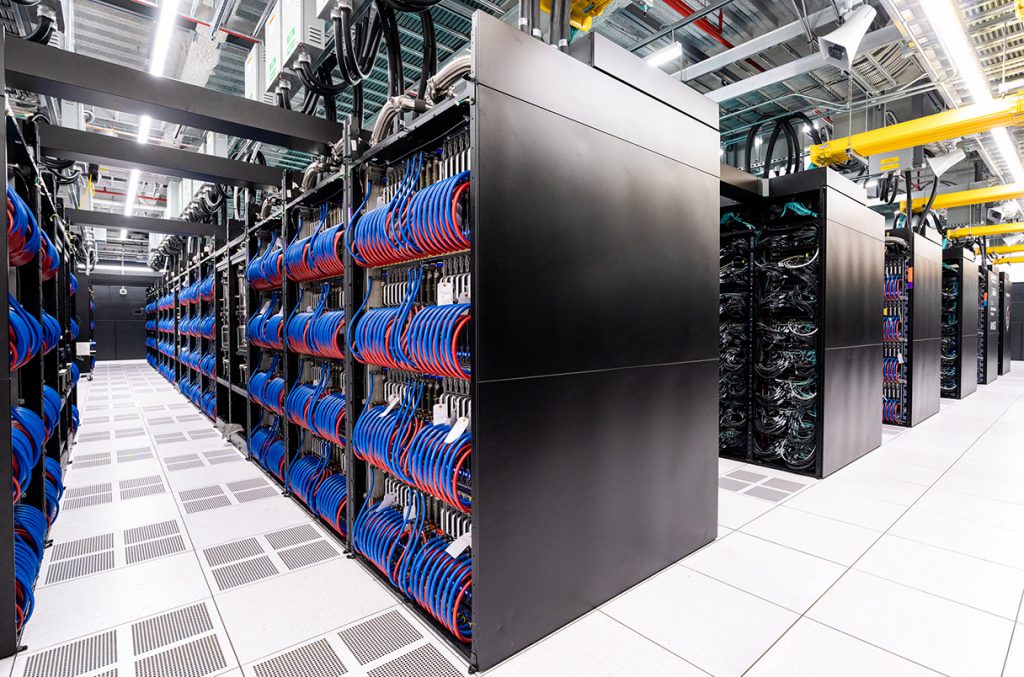Introduction
Advancements in aerodynamics are poised to revolutionize the aerospace industry. Exascale computing, with its unprecedented computational power, is at the forefront of this transformation. In this article, we delve into how exascale modeling enhances fuel efficiency and reduces noise, making it a game-changer for stakeholders across the aviation landscape.
Exascale Computing: A Paradigm Shift
Exascale computing refers to machines capable of performing a quintillion (a billion billion) or more operations per second. These supercomputers outpace their predecessors by a factor of 1,000, enabling simulations with unparalleled realism and detail. For stakeholders, exascale opens pathways to explore new technologies and accelerate time to commercialization (Source: InsideHPC).
Exascale computing’s impact is not just limited to speed. The ability to handle vast datasets and complex algorithms allows for more accurate and comprehensive models. These models can simulate every aspect of an aircraft’s performance, from aerodynamics to structural integrity. This leap in capability means that engineers and researchers can now test and refine designs in ways that were previously impossible, leading to safer, more efficient, and more environmentally friendly aircraft.

Fuel Efficiency: The Holy Grail
Fuel efficiency remains a top priority for airlines, manufacturers, and environmental advocates. Exascale modeling allows engineers to optimize aircraft designs, minimizing drag and maximizing lift. Here’s how:
Computational Fluid Dynamics (CFD)
Using GE’s custom code for modeling computational fluid dynamics, researchers evaluate aerodynamic aspects of next-generation engine designs. By simulating airflow around components, they identify areas for improvement. For instance, the CFM RISE program’s open fan architecture was analyzed for both aerodynamics and acoustics, resulting in an innovative design that improves operational efficiency while meeting noise requirements (Source: InsideHPC).
CFD simulations can model how air flows over an aircraft’s wings and body, revealing turbulent areas that increase drag. By refining these designs, engineers can reduce drag, allowing the aircraft to fly more efficiently and use less fuel. This not only saves costs but also reduces the environmental impact of aviation.
Flexible Wing Designs
NASA’s aerodynamics simulations focus on creating adaptable aircraft wing designs. These flexible wings adjust during flight, optimizing lift-to-drag ratios. Fuel efficiency increases as the aircraft responds dynamically to changing conditions (Source: NASA).
Flexible wings can morph or change shape during different phases of flight, such as takeoff, cruising, and landing. This adaptability allows for optimal performance under varying conditions, significantly enhancing fuel efficiency. Such innovations are crucial as the industry seeks to balance performance with sustainability.
Noise Reduction: A Win-Win
Noise pollution affects communities near airports and impacts passenger comfort. Exascale modeling contributes significantly to noise reduction:
Quieter Engine Designs
By simulating turbulent flow and acoustic properties, researchers fine-tune engine designs. The goal is to achieve optimal performance while minimizing noise. Exascale allows for detailed analysis, resulting in quieter engines that meet stringent regulations (Source: InsideHPC).
Noise reduction in engines is achieved by understanding and mitigating the sources of noise at a microscopic level. Exascale computing enables simulations that capture the intricate details of air and sound waves, leading to innovations in engine design that significantly lower noise levels.
Noise-Optimized Flight Paths
Exascale simulations help optimize flight paths to reduce noise exposure over populated areas. Airlines can balance efficiency and community well-being, achieving a win-win situation (Source: InsideHPC).
Optimizing flight paths involves calculating the most efficient routes that minimize noise impact on the ground. These paths take into account various factors such as weather, air traffic, and the acoustic profile of the aircraft. The result is a quieter experience for those living near airports and a smoother, more efficient flight for passengers.
The Numbers Speak
Statistics reinforce the case for exascale modeling:
- 20% Noise Reduction: Exascale-driven innovations lead to a remarkable 20% reduction in aircraft noise, benefiting passengers and communities alike (Source: NASA).
- 30% Fuel Savings: Fuel efficiency gains translate directly into cost savings. Airlines can reduce their environmental footprint while improving profitability (Source: International Air Transport Association, IATA).
These figures highlight the tangible benefits of exascale modeling. A 20% reduction in noise can transform the quality of life for millions of people living near airports, while a 30% improvement in fuel efficiency can significantly lower the aviation industry’s carbon footprint.

Conclusion
The future of aerodynamics lies in exascale computing. Stakeholders—whether airlines, manufacturers, or environmental advocates—must embrace this transformative technology. As we soar toward a greener, quieter sky, exascale modeling remains our most powerful tool for progress (Source: AdaptNetwork).












